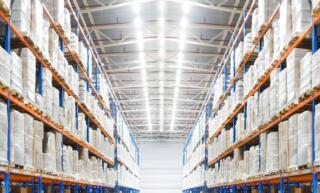
Current Trends in Building and Construction
The building and construction industry continuously evolves, with new advancements and approaches shaping how we design, build, and maintain our facilities. Understanding these trends ensures future projects are successful, with improved appearance and stability. Learn about the current trends in building and construction so you can stay at the forefront of this field.
Sustainability and Green Building Practices
Sustainability and green building practices continue growing in prominence in the construction industry. This trend derives from environmental concerns and the potential for cost savings.
Green buildings utilize design principles, construction methods, and materials that minimize environmental impact and reduce energy consumption. These structures may include energy-efficient insulation and windows, rainwater harvesting systems, solar panels, and more.
Additionally, sustainable practices, like the use of renewable materials, are becoming more common. That’s why construction companies take advantage of using polyethylene for plastic parts in addition to other recyclable materials. These practices demonstrate a commitment to environmental stewardship and result in significant operational cost savings over the lifespan of the building.
Building Information Modeling
Building information modeling (BIM) is transforming the planning and execution of construction projects. BIM allows teams to create detailed 3D digital models of buildings and infrastructure, enabling accurate visualization, planning, and collaboration throughout the span of a project.
Gathered information comes from building plans and the analysis of design software to provide a better understanding of a building’s layout. This innovative approach leads to better project outcomes, improved cost management, reduced risk, and enhanced communication among stakeholders.
The Internet of Things and Smart Buildings
The Internet of Things (IoT) permeates the construction industry, with smart buildings taking center stage. These interconnected facilities leverage advanced sensors, actuators, and communication technologies to monitor and control building systems, leading to increased energy efficiency, improved safety, and enhanced building performance.
As more devices connect to the IoT, facility managers gain unparalleled insight into their buildings’ performance, enabling data-driven decision-making and proactive maintenance.
Adaptive Reuse and Retrofits
As our already-built environment ages, adaptive reuse and retrofitting have emerged as viable strategies for repurposing and extending the life of existing buildings. Rather than demolishing structures and rebuilding according to current regulations, these approaches focus on upgrading the facilities to meet modern standards while preserving their historical character and architectural significance.
Adaptive reuse and retrofits lead to significant cost savings compared to new construction, and these options contribute to sustainable building practices by reducing the demand for new materials and minimizing waste generation.
Staying informed about current trends in building and construction is crucial in order for management to make better decisions and enhance their professional expertise. By embracing these industry trends, you can ensure that your facilities remain efficient, sustainable, and functional for years to come.




